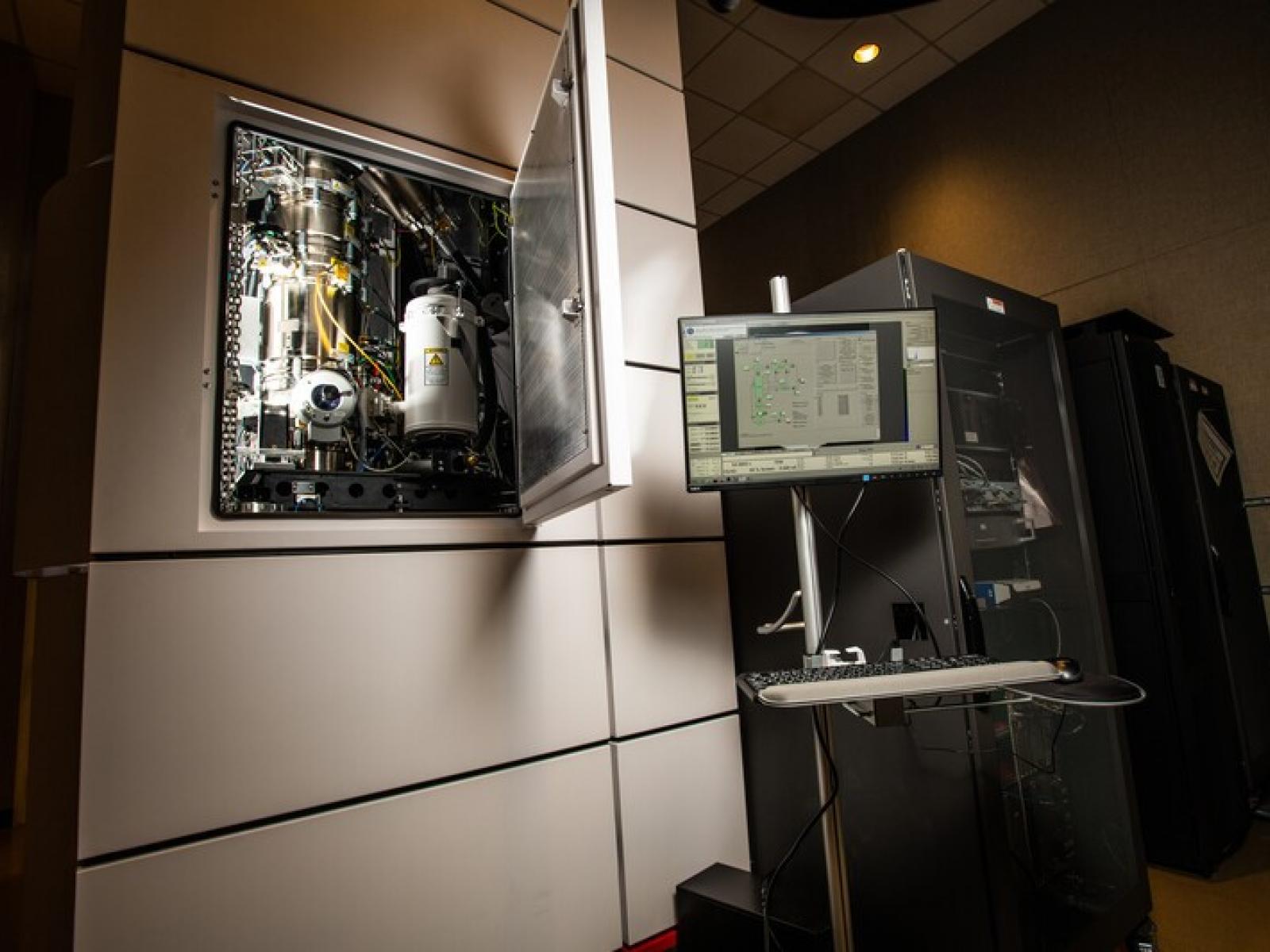Themis Z 30-300 kV, Monochromated Aberration Corrected Transmission Electron Microscope (MACSTEM)
United States

Photo by Andrea Starr | Pacific Northwest National Laboratory
The Themis Z 30-300 kV is a state-of-the-art monochromated aberration corrected scanning transmission electron microscope (MACSTEM) that provides high-resolution analytical characterization for a broad range of materials science, catalysis, and geochemistry research. The instrument operates from 30–300 kV accelerating voltage, making it well suited for materials sensitive to beam damage. Its high-brightness Schottky field-emission gun and monochromator unit allow the MACSTEM to achieve energy resolutions of 30 meV at 60 kV and 100 meV at 300 kV. For scanning (STEM) imaging, the instrument possesses an S-CORR aberration corrector that can correct fourth and fifth order aberrations to enable resolutions of 0.6 Å at 300 kV and 1.0 Å at 60 kV. The ability to aberration correct at low voltages facilitates the study of highly sensitive materials at atom-level resolution.
Equipped with a series of scanning imaging detectors, the MACSTEM has high-angle annular dark field (HAADF), segmented annular dark field (ADF), and bright field (BF) detectors. The instrument can acquire 4D-STEM data with a pixilated detector (EMPAD). The microscope can perform elemental analysis, via an equipped electron energy loss spectrometer (EELS) or an x-ray energy dispersive spectroscopy (EDS) detector, across its operating voltage range. The microscope is equipped with a side-entry piezo stage that enables single and double tilting up to a ± 70° tilt range, as well as cryo and heating holders.
Research Application
- Supporting materials science research, this resource supports studies of a wide range of materials. The instrument provides the capability to analyze the bulk structure, the structure of interfaces and grain boundaries, and determine the nature of structural defects down to atomic level using imaging, diffraction, and spectroscopic techniques such as EDS and EELS. The EELS capability can also be used to study the electronic and optical properties of materials, with an energy resolution down to 30 meV. For many types of imaging, the materials can be studied under a range of temperatures.
- Focused on solid materials, including catalysis research. The MACSTEM enables researchers to study the morphology, structure, and chemistry of materials. Can resolve single atom materials at the low accelerating voltage of 60 kV, critical for mitigating knock-on displacement damage. Provides information on the structure and surfaces of beam-sensitive materials using integrated differential phase contrast and ptychographic imaging.
- Analysis can be performed in standard 2D projections as well as in 3D using EDS tomographic reconstructions. EELS and EDS spectroscopy techniques can help determine the composition of bimetallic and more complex catalysts down to the atomic level. The stability of materials can be tested at elevated temperatures using in situ heating holders.
- Supporting geochemistry research, this resource provides crystallographic analysis of mineral materials by either aberration corrected atomic-level imaging or selected-area diffraction. The instrument also enables the detection and spatial mapping of trace elements. Beam-sensitive geochemistry samples can be studied under low accelerating voltages and under cryogenic conditions without sacrificing necessary resolution.